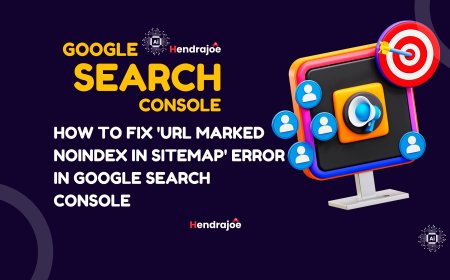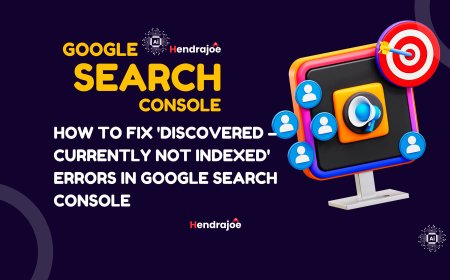How to Structure SEO Content for Better Rankings
Learn how to structure SEO content effectively for better rankings. This guide will show you how to create content that is optimized for search engines and user engagement.

Creating SEO-friendly content is one of the best ways to improve your website’s visibility and ranking on search engines like Google. However, it's not just about stuffing your articles with keywords. How you structure your content matters just as much. The better your content is structured, the easier it will be for search engines to crawl, index, and rank it.
In this article, we’ll cover the best strategies for structuring SEO content that not only appeals to search engines but also provides value to your readers. From headers and keywords to formatting and internal linking, we’ll explore every aspect that can help boost your rankings.
1. Start with Keyword Research
Before you start writing, effective SEO content begins with solid keyword research. Keywords are the terms your target audience is searching for, and strategically using these keywords in your content helps Google understand what your page is about.
How to Do Keyword Research:
- Use tools like Google Keyword Planner, SEMrush, or Ahrefs to find keywords related to your topic.
- Look for long-tail keywords (3+ words) that are less competitive but highly specific.
- Analyze the search intent behind the keywords—are users looking for information, products, or services?
- Incorporate variations of your primary keywords to avoid keyword stuffing.
By starting with relevant keywords, you can tailor your content to meet both user and search engine needs.
2. Craft a Compelling Title Tag and Meta Description
Your title tag and meta description are some of the first elements that search engines and users will see when your page appears in search results. These should be clear, concise, and contain your main keyword.
Title Tag:
- Keep it under 60 characters to avoid truncation.
- Include your main keyword near the beginning.
- Make it compelling to encourage clicks (use action words or highlight benefits).
Meta Description:
- Write a description of 150-160 characters.
- Include relevant keywords and a call-to-action to encourage users to click through.
- Keep it informative, but don’t overstuff with keywords.
Both of these elements help improve click-through rates (CTR), which can also affect rankings.
3. Use Headings and Subheadings (H1, H2, H3…)
Headings and subheadings are crucial for both readability and SEO. They break your content into digestible sections and provide Google with a clear structure for understanding your content.
- H1 Tag: The H1 tag should be reserved for your main title. It’s the most important heading on the page and should include the primary keyword.
- H2 and H3 Tags: These are used for subheadings. Include secondary keywords or related terms to further optimize your content.
- Use H2 tags for major sections, and H3 tags for subsections within those sections.
Headings not only make your content more readable for users but also give Google valuable signals about the content of your page.
4. Create Well-Structured Paragraphs
When it comes to SEO content structure, how you format your paragraphs can influence both rankings and user engagement.
- Keep paragraphs short and focused—around 2-4 sentences per paragraph.
- Use bullet points or numbered lists to break down information and make it easier to scan.
- Avoid large blocks of text that are difficult to read, as these can cause users to bounce from your page.
The easier it is for users to navigate your content, the more likely they are to stay on your page longer, which can improve dwell time—a key ranking factor for SEO.
5. Optimize Your Content for Featured Snippets
Featured snippets are the boxed information that appears at the top of some Google search results. Structuring your content to answer questions clearly can increase your chances of appearing in a featured snippet.
- Use clear question-based headings (e.g., “What is SEO?”) to target "People also ask" queries.
- Format your answer in a short paragraph (40-50 words), followed by a list or bullet points when applicable.
- Always aim to provide the most precise and direct answer to common questions in your niche.
By structuring content in a way that answers specific questions, you increase the likelihood of earning a featured snippet, which can significantly boost visibility.
6. Implement Internal and External Links
Both internal linking and external linking play an important role in SEO content structure.
Internal Links:
- Link to other relevant pages on your site to help both users and search engines discover more content.
- Use anchor text that is descriptive and relevant to the page you’re linking to.
- Internal links improve website navigation and help spread link equity across your site.
External Links:
- Link to authoritative sources and reputable websites to provide additional value to your readers.
- Ensure the external links are relevant to your topic and enhance the credibility of your content.
Both types of links improve the overall authority of your page, helping to establish trust with search engines.
7. Optimize for Mobile and User Experience (UX)
More than half of all web traffic comes from mobile devices, so it’s essential that your content is optimized for mobile users. A well-structured page not only looks good on a desktop but also loads quickly and provides a seamless experience on mobile.
- Responsive Design: Ensure your website is responsive, meaning it adjusts based on the device screen size.
- Page Speed: Use tools like Google PageSpeed Insights to check how quickly your page loads and address any performance issues.
- Easy Navigation: Ensure your content is easy to navigate, even on small screens, with large buttons and clickable links.
Google uses mobile-first indexing, meaning it prioritizes mobile-friendly sites in search rankings. An optimized user experience is crucial for ranking well.
8. Use Multimedia: Images, Videos, and Other Visuals
Including relevant images, videos, or other multimedia elements is not just great for user experience—it also helps with SEO. Visual content can keep users engaged longer and improve your page’s overall quality.
- Images: Use high-quality images with descriptive, keyword-rich alt text.
- Videos: Embedded videos can improve engagement and time on page. Make sure the video is relevant to your content.
- Infographics: These can summarize complex data and make the content easier to understand.
Search engines also index images and videos, so make sure you optimize their titles, descriptions, and alt text for better visibility.
9. Focus on Content Depth and Quality
Google values high-quality, in-depth content. A shallow article may rank initially but is unlikely to stay at the top for long. Aim for comprehensive content that thoroughly answers users’ questions, addresses related subtopics, and provides unique insights.
- Comprehensive Content: Aim to answer multiple facets of a topic. Cover related subtopics to increase your content's relevance and depth.
- Quality Over Quantity: Focus on writing content that’s valuable to users. Don’t over-optimize for SEO and sacrifice the quality of the content.
Google rewards pages that provide comprehensive, authoritative, and valuable content to users.
10. Keep Your Content Fresh and Updated
SEO is not a one-time process. To maintain good rankings, you need to keep your content updated. Over time, search engines may identify new information or changes in your industry, so periodically revisiting and refreshing your content is important.
- Update Statistics: Keep your content relevant by regularly updating data and statistics.
- Refresh Outdated Information: Review older posts and update any outdated references.
- Reoptimize for New Keywords: As trends change, revisit your content and optimize it for new keywords.
Updated content signals to search engines that your page remains relevant and authoritative.
Conclusion
To structure SEO content for better rankings, you need a balanced approach that combines keyword optimization with user experience. Start with solid keyword research, craft a compelling title and meta description, and use headers and subheadings to organize your content. Break your content into readable chunks, include multimedia, optimize for mobile, and always prioritize quality over quantity.
By implementing these strategies, your content will not only be more likely to rank higher in search results but will also engage users, reduce bounce rates, and increase time on page. So start applying these tactics, and watch your SEO rankings soar!
What's Your Reaction?








































